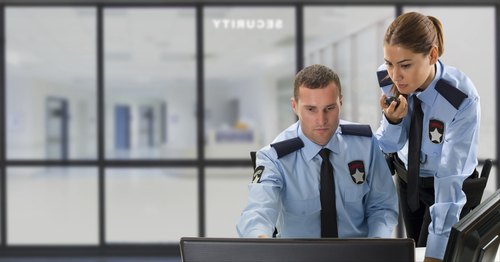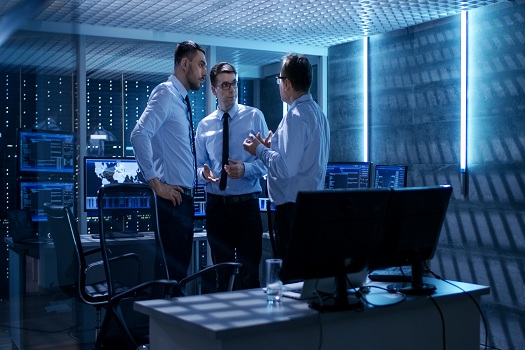Empowering Your Organization with Ironclad Corporate Security Steps
Empowering Your Organization with Ironclad Corporate Security Steps
Blog Article
From Cybersecurity to Physical Actions: Strengthening Corporate Safety in a Transforming World
In today's rapidly evolving digital landscape, the relevance of company safety and security can not be overemphasized. As cyber threats come to be significantly advanced and widespread, companies must surpass conventional cybersecurity procedures to protect their possessions and procedures - corporate security. This is where the assimilation of physical protection measures ends up being important. By integrating the strengths of both cybersecurity and physical safety and security, business can create an extensive protection technique that addresses the varied array of risks they encounter. In this discussion, we will certainly check out the transforming danger landscape, the need to integrate cybersecurity and physical safety and security, the execution of multi-factor verification procedures, the relevance of worker awareness and training, and the adjustment of safety and security actions for remote workforces. By examining these crucial locations, we will get important insights right into just how companies can strengthen their corporate safety in an ever-changing globe.
Recognizing the Altering Hazard Landscape
The evolving nature of the contemporary world requires an extensive understanding of the transforming threat landscape for reliable company security. It is essential for organizations to stay informed and adapt their security determines to address these evolving threats.
One key facet of understanding the altering hazard landscape is identifying the different types of dangers that organizations encounter. Furthermore, physical dangers such as theft, vandalism, and business reconnaissance remain prevalent problems for businesses.
Monitoring and analyzing the hazard landscape is necessary in order to identify possible risks and vulnerabilities. This includes remaining upgraded on the most recent cybersecurity patterns, analyzing hazard knowledge records, and carrying out routine threat analyses. By recognizing the changing hazard landscape, companies can proactively carry out suitable safety measures to reduce dangers and protect their properties, track record, and stakeholders.
Integrating Cybersecurity and Physical Security
Integrating cybersecurity and physical safety is crucial for detailed company protection in today's interconnected and digital landscape. As companies increasingly depend on innovation and interconnected systems, the boundaries between physical and cyber risks are coming to be obscured. To successfully secure versus these dangers, an alternative strategy that incorporates both cybersecurity and physical protection actions is necessary.
Cybersecurity concentrates on safeguarding electronic assets, such as networks, systems, and data, from unauthorized accessibility, disruption, and burglary. Physical safety, on the other hand, encompasses steps to protect physical properties, individuals, and facilities from susceptabilities and hazards. By integrating these two domains, companies can resolve susceptabilities and hazards from both electronic and physical angles, therefore boosting their overall security position.
The assimilation of these 2 disciplines enables a more extensive understanding of safety and security threats and enables a unified action to events. Physical access controls can be enhanced by incorporating them with cybersecurity methods, such as two-factor authentication or biometric identification. Cybersecurity procedures can be enhanced by physical security steps, such as security electronic cameras, alarm systems, and protected accessibility points.

Applying Multi-Factor Verification Steps
As organizations significantly focus on detailed security steps, one reliable approach is the implementation of multi-factor verification procedures. Multi-factor authentication (MFA) is a safety approach that needs individuals to provide several forms of recognition to access a system or application. This strategy includes an extra layer of protection by incorporating something the user knows, such as a password, with something they have, like a security or a fingerprint token.
By carrying out MFA, companies can substantially improve their protection pose - corporate security. Traditional password-based authentication has its restrictions, as passwords can be easily jeopardized or neglected. MFA reduces these risks by including an additional authentication factor, visit this website making it a lot more tough for unapproved individuals to get to delicate info
There are numerous types of multi-factor authentication techniques readily available, consisting of biometric verification, SMS-based verification codes, and hardware symbols. Organizations need to assess their certain requirements and pick the most proper MFA service for their requirements.
However, the execution of MFA ought to be meticulously prepared and performed. It is essential to strike a balance in between safety and use to avoid user disappointment and resistance. Organizations must additionally consider possible compatibility concerns and supply appropriate training and assistance to guarantee a smooth shift.
Enhancing Employee Recognition and Training
To strengthen corporate protection, companies have to focus on boosting worker understanding and training. In today's rapidly advancing danger landscape, staff members play an essential function in safeguarding an organization's sensitive information and assets. Many security violations occur due to human error or lack of understanding. Consequently, organizations need to purchase comprehensive training programs to enlighten their employees about possible threats and the most effective techniques for mitigating them.
Reliable staff member recognition and training programs ought to cover a wide array of subjects, consisting of data protection, phishing strikes, social engineering, password hygiene, and physical safety procedures. These programs should be tailored to the details requirements and obligations of various staff member functions within the organization. Normal training workshops, simulations, and sessions can help staff members establish the necessary abilities and expertise to respond and determine to protection threats properly.
In addition, companies must motivate a society of security recognition and provide continuous updates and suggestions to maintain workers educated about the current hazards and reduction methods. This can be done with interior communication networks, such as e-newsletters, intranet portals, and e-mail projects. By promoting a security-conscious labor force, companies can dramatically decrease the possibility of safety events and protect their useful assets from unauthorized accessibility or concession.

Adapting Safety Steps for Remote Labor Force
Adjusting corporate safety and security steps to accommodate a remote workforce is crucial in ensuring the defense of delicate details and properties (corporate security). With the boosting fad of remote work, companies need to apply appropriate security steps to mitigate the risks associated with this new means of his response functioning
One vital facet of adapting security procedures for remote job is establishing protected interaction channels. Encrypted messaging systems and online personal networks (VPNs) can assist secure delicate information and protect against unauthorized gain access to. In addition, companies must enforce making use of strong passwords and multi-factor authentication to improve the security of remote access.
Another crucial consideration is the application of protected remote gain access to services. This includes providing employees with secure accessibility to corporate sources and data with digital desktop framework (VDI), remote desktop procedures (RDP), or cloud-based remedies. These innovations make certain that delicate information continues to be secured while enabling workers to perform their roles successfully.

Finally, thorough safety and security understanding training is vital for remote employees. Educating sessions should cover ideal methods for firmly accessing and handling sensitive details, recognizing and reporting phishing attempts, and maintaining the overall cybersecurity hygiene.
Conclusion
In verdict, as the risk landscape proceeds to progress, it is essential for organizations to reinforce their safety and security measures both in the cyber and physical domains. Integrating cybersecurity and physical safety, implementing multi-factor authentication actions, and improving staff member awareness and training are crucial steps towards achieving durable company safety.
In this conversation, we will certainly discover the changing hazard landscape, the demand to incorporate cybersecurity and physical he has a good point safety, the execution of multi-factor verification measures, the value of employee understanding and training, and the adjustment of protection procedures for remote workforces. Cybersecurity measures can be complemented by physical protection procedures, such as security video cameras, alarm systems, and safe and secure access factors.
As organizations significantly focus on extensive safety steps, one efficient technique is the application of multi-factor verification procedures.In conclusion, as the threat landscape proceeds to advance, it is critical for companies to reinforce their security measures both in the cyber and physical domain names. Integrating cybersecurity and physical security, carrying out multi-factor verification actions, and boosting staff member recognition and training are essential actions towards achieving robust corporate safety and security.
Report this page